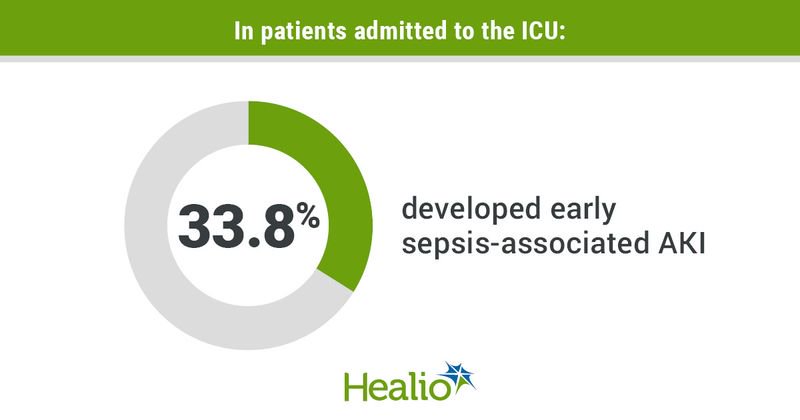Obesity linked with higher risk of early sepsis-associated AKI in adults admitted to ICU
Key takeaways:
- Overall, 33.8% of patients admitted to an ICU developed early sepsis-associated AKI.
- Obesity correlated with a higher incidence of sepsis-associated AKI compared with normal weight.
Obesity may be linked to a higher risk of developing early sepsis-associated AKI in adults admitted to the ICU, according to a recently published study.
Researchers led by Yoon Hae Ahn, MD, of the Seoul National University Hospital, ran a nationwide prospective cohort trial of 4,041 patients aged 19 years or older admitted to 20 tertiary hospital ICUs in Korea from 2019 and 2021 to explore related clinical outcomes.

“Obesity is rising in ICUs worldwide ... Multiple studies have shown an association between obesity and the development of AKI in patients with critical illness,” Ahn and colleagues wrote. “Sepsis-associated AKI (SA-AKI) is associated with poor clinical outcomes, including a higher risk of in-hospital mortality, longer hospital stays and a greater chance of [chronic kidney disease] CKD.”
After excluding patients with preexisting stage 3A to 5 CKD from the study, the remaining patients were categorized by BMI.
The main outcome was the incidence of SA-AKI within 48 hours of ICU admission, and secondary outcomes were mortality and clinical recovery, defined as survival to discharge within 30 days.
Findings showed 33.8% of patients developed early SA-AKI. Obesity correlated with a higher SA-AKI incidence compared with normal weight, and obesity was tied to lower in-hospital mortality in patients without SA-AKI compared to those without obesity. Researchers categorized weight into four groups of BMI: underweight for a BMI less than 18.5 kg/m2, normal weight for 18.5 kg/m2 to 22.9 kg/m2, overweight between 23 kg/m2 and 24.9 kg/m2 and obesity defined as 25 kg/m2 or greater.
Researchers found no difference in mortality for patients with SA-AKI, adding that while patients with obesity and without SA-AKI had a greater likelihood of clinical recovery compared to those without obesity, it was less likely in patients with both conditions.
The results “highlight the need for future research on the mechanisms underlying the complex association among obesity [and] SA-AKI and clinical outcomes in patients with sepsis,” Ahn and colleagues wrote.
